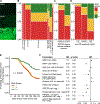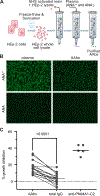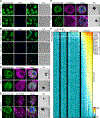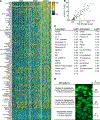Autoantibodies inhibit Plasmodium falciparum growth and are associated with protection from clinical malaria
- PMID: 38901428
- PMCID: PMC11324401
- DOI: 10.1016/j.immuni.2024.05.024
Autoantibodies inhibit Plasmodium falciparum growth and are associated with protection from clinical malaria
Abstract
Many infections, including malaria, are associated with an increase in autoantibodies (AAbs). Prior studies have reported an association between genetic markers of susceptibility to autoimmune disease and resistance to malaria, but the underlying mechanisms are unclear. Here, we performed a longitudinal study of children and adults (n = 602) in Mali and found that high levels of plasma AAbs before the malaria season independently predicted a reduced risk of clinical malaria in children during the ensuing malaria season. Baseline AAb seroprevalence increased with age and asymptomatic Plasmodium falciparum infection. We found that AAbs purified from the plasma of protected individuals inhibit the growth of blood-stage parasites and bind P. falciparum proteins that mediate parasite invasion. Protected individuals had higher plasma immunoglobulin G (IgG) reactivity against 33 of the 123 antigens assessed in an autoantigen microarray. This study provides evidence in support of the hypothesis that a propensity toward autoimmunity offers a survival advantage against malaria.
Keywords: Plasmodium; autoantibodies; autoimmunity; cross-reactivity; infection; malaria.
Copyright © 2024 Elsevier Inc. All rights reserved.
Conflict of interest statement
Declaration of interests The authors declare no competing interests.
Figures




Comment on
-
Autoantibodies and Malaria: Where We Stand? Insights Into Pathogenesis and Protection.Front Cell Infect Microbiol. 2020 Jun 11;10:262. doi: 10.3389/fcimb.2020.00262. eCollection 2020. Front Cell Infect Microbiol. 2020. PMID: 32596165 Free PMC article. Review.
References
-
- Guiyedi V, Chanseaud Y, Fesel C, Snounou G, Rousselle J-C, Lim P, Koko J, Namane A, Cazenave P-A, Kombila M, et al. (2007). Self-Reactivities to the Non-Erythroid Alpha Spectrin Correlate with Cerebral Malaria in Gabonese Children. Plos One 2, e389. 10.1371/journal.pone.0000389. - DOI - PMC - PubMed
-
- Bansal D, Herbert F, Lim P, Deshpande P, Bécavin C, Guiyedi V, Maria I. de, Rousselle JC, Namane A, Jain R, et al. (2009). IgG Autoantibody to Brain Beta Tubulin III Associated with Cytokine Cluster-II Discriminate Cerebral Malaria in Central India. Plos One 4, e8245. 10.1371/journal.pone.0008245. - DOI - PMC - PubMed
-
- Duarte J, Herbert F, Guiyedi V, Franetich J-F, Roland J, Cazenave P-A, Mazier D, Kombila M, Fesel C, and Pied S (2012). High Levels of Immunoglobulin E Autoantibody to 14–3-3 ε Protein Correlate With Protection Against Severe Plasmodium falciparum Malaria. J Infect Dis 206, 1781–1789. 10.1093/infdis/jis595. - DOI - PubMed
-
- Guiyedi V, Bécavin C, Herbert F, Gray J, Cazenave P-A, Kombila M, Crisanti A, Fesel C, and Pied S (2015). Asymptomatic Plasmodium falciparum infection in children is associated with increased auto-antibody production, high IL-10 plasma levels and antibodies to merozoite surface protein 3. Malaria J 14, 162. 10.1186/s12936-015-0658-7. - DOI - PMC - PubMed
Publication types
MeSH terms
Substances
Grants and funding
LinkOut - more resources
Full Text Sources

